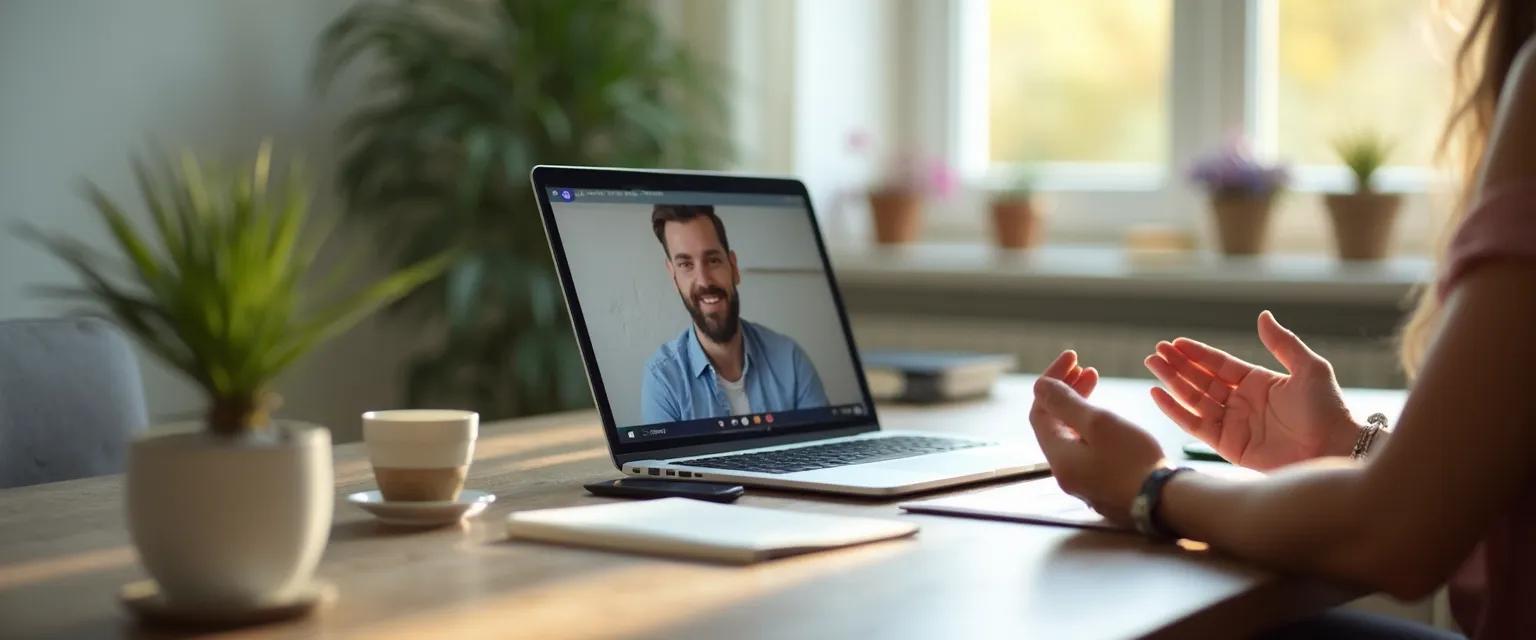7 Quick Techniques To Overcome Anxiety In Virtual Meetings | Anxiety
That familiar wave of anxiety in virtual meetings—the racing heart, sweaty palms, and racing thoughts just before you click "Join Meeting." Sound familiar? You're not alone. With remote work becoming a permanent fixture in our professional lives, anxiety in virtual meetings has emerged as a genuine challenge for many of us. The good news? This digital discomfort is both normal and manageable.
What makes anxiety in virtual meetings different from in-person nervousness is the unique combination of technological concerns, self-view distraction, and the peculiar intimacy of seeing colleagues in their homes while they see you in yours. This creates a perfect storm for even the most confident professionals to experience heightened nervousness. But here's where anticipatory stress management makes all the difference.
The seven science-backed techniques below take less than five minutes each and can transform your virtual meeting experience from nerve-wracking to natural. Let's explore how to effectively manage anxiety in virtual meetings with practical approaches anyone can implement immediately.
Body-Based Techniques to Reduce Anxiety in Virtual Meetings
Your body and mind are intimately connected, which is why physical techniques are surprisingly effective for managing anxiety in virtual meetings. These approaches work by activating your parasympathetic nervous system—your body's built-in calming mechanism.
The 4-7-8 Breathing Technique
This powerful breathing pattern acts like a natural tranquilizer. Just before your meeting, inhale quietly through your nose for 4 seconds, hold your breath for 7 seconds, then exhale completely through your mouth for 8 seconds. Repeat three times to feel a noticeable shift in your nervous system and reduce anxiety in virtual meetings almost instantly.
Chair-Based Progressive Muscle Relaxation
This modified version works perfectly before virtual calls. While seated, tense and then release each muscle group for 5 seconds, starting from your toes and working up to your face. This technique releases physical tension that contributes to anxiety in virtual meetings and creates a sense of bodily calm.
The Two-Minute Power Pose
Research shows that standing in an expansive, confident posture for just two minutes increases confidence hormones and decreases stress hormones. Before turning your camera on, stand with your hands on your hips or arms raised in a V-shape to boost your confidence and reduce virtual meeting anxiety.
Mental Preparation Strategies for Virtual Meeting Anxiety
While physical techniques address the bodily symptoms of anxiety in virtual meetings, mental strategies tackle the cognitive aspects directly. These approaches help reframe your thinking patterns and create a more positive meeting mindset.
The 5-Minute Preparation Ritual
Create a consistent pre-meeting routine that signals to your brain it's time to focus. This might include reviewing your notes, setting up your space, adjusting lighting, testing your microphone, and taking three deep breaths. Having this ritual reduces uncertainty—a major contributor to anxiety in virtual meetings.
Visualization Success Technique
Spend two minutes vividly imagining yourself participating confidently in the upcoming meeting. Picture yourself speaking clearly, responding thoughtfully to questions, and appearing composed on camera. This mental rehearsal primes your brain for success and diminishes anxiety in virtual meetings through positive anticipation.
Thought Reframing Exercise
Transform anxious thoughts into productive ones by asking: "What's one thing I can contribute to this meeting?" This shifts your focus from self-conscious worry to valuable participation. For example, "Everyone will notice I'm nervous" becomes "I have important insights to share about the project timeline."
Personal Power Statement
Create a brief, meaningful affirmation that resonates with you, such as "I communicate clearly and confidently" or "My ideas add value." Repeat this statement three times before joining your virtual meeting to establish a positive mindset.
Master Your Anxiety in Virtual Meetings with These Practical Tools
The most effective approach to managing anxiety in virtual meetings combines both physical and mental techniques into a personalized system. For high-stakes presentations, the full sequence of breathing, power posing, and visualization creates a comprehensive anxiety management strategy. For routine check-ins, perhaps just your preparation ritual and a quick thought reframe are sufficient.
Remember that mastering anxiety in virtual meetings is a skill that improves with practice. Each time you implement these techniques, you're building neural pathways that make confidence your default state rather than nervousness. The key is consistency—using these tools regularly until they become automatic.
Ready to transform your virtual meeting experience? Try implementing just one technique from this guide before your next online meeting. Notice the difference in how you feel and perform. Then gradually incorporate additional strategies to create your complete toolkit for managing anxiety in virtual meetings effectively.




